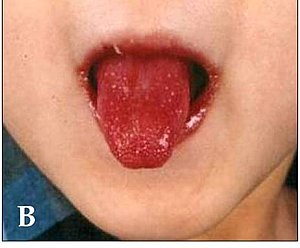Kawasaki Syndrome like Illness in Children is Raising during COVID-19 Pandemic

Subhra Adhikari, Neucrad Health Desk, September 3, 2020
Several children are now experiencing Kawasaki Syndrome like illness following COVID-19 infection. Some are getting admitted to hospitals with fever, diarrhoea, rash, vomiting, extreme lethargy, and swollen lips, hands, and feet. Experts feel that the Multisystem Inflammatory Syndrome in Children (MIS-C) might be linked with COVID-19 infection, as the boy had developed SARS-CoV-2 antibodies in his system. Kawasaki disease has been found to occur most frequently among Japanese children. Japanese pediatrician, Tomisaku Kawasaki, described this particular pattern of signs and symptoms in 1967. During winter and spring this disease can occur in clusters or localized outbreaks. Kawasaki disease is a form of vasculitis, and primarily affects kids below five years. Let us know more about this ailment.
What is the cause of Kawasaki Disease?
In Kawasaki disease, walls of medium-sized blood vessels become inflamed. If the coronary artery (the artery carrying blood to the heart) gets affected, then it can lead to heart ailments in children. However, the exact cause of this disorder is still unknown to scientists. Genetic changes, bacterial or viral infection, or the action of certain chemicals and irritants can be the culprit behind Kawasaki disease. It is also known as mucocutaneous lymph node syndrome as the lymph nodes, mucous membranes, and the skin becomes swollen in patients. Though the symptoms of the disorder can be severe, in most cases, it can get treated without any significant complications.

Symptoms of Kawasaki Disease
Patients experience the symptoms of Kawasaki disease in three phases. Detailed below are the changes noticed in each stage.
Phase 1
- fever with more than 102.2 F (39 C), lasting over three days
- red eyes with thick discharge
- swollen, dry, and cracked lips
- inflamed tongue
- lymph nodes can also become swollen in the neck region
- appearance of rashes in the genital area
- palms and soles of the feet may become inflamed and develop red skin
- irritation and anxiety
Phase 2
- skin on the hand and feet start peeling off
- pain in the joint and abdominal region
- vomiting
- diarrhoea
Complications of Kawasaki Disease

In some rare cases, Kawasaki disease may lead to severe complications, including dysrhythmia (irregular heart rhythms), myocarditis (swelling in the heart muscles), and mitral regurgitation (damage in the heart valves). Since the artery walls become weak (aneurysms), there is also an increased risk of artery blockages among kids.
Risk Factors for Kawasaki Disease
The following individuals demonstrate a higher tendency of developing Kawasaki disease:
- Children bellow 5 years are prone to this ailment.
- Boys are 1.5 times more likely to develop Kawasaki disease than the other gender.
- Kids of Asian descent have a higher chance of getting infected
Diagnosis of Kawasaki Disease
Doctors advise blood tests, urine tests, electrocardiogram, and echocardiogram for detecting Kawasaki disease. At first, they conduct a physical examination to note the inflammation in various body parts and other related symptoms. Blood tests can reveal a high white blood cell count and the occurrence of anaemia, which can point towards Kawasaki disease if relevant symptoms are present in patients. The test for B-type natriuretic peptide (BNP) also points out that the heart of the child is under stress. Moreover, electrocardiogram and echocardiogram help in detecting irregular heart rhythms and damage in coronary arteries. A comprehensive study of all these parameters is necessary for the diagnosis of Kawasaki disease.
Treatment of Kawasaki Disease
It is crucial the start with the treatment for Kawasaki as early as possible for complete cure of the ailment and limiting the chances of complications. Doctors usually prescribe an infusion of gamma globulin intravenously to minimise the chances of developing coronary artery damages. The immune globulin contains antibodies which help in treating the infection. Additionally, the doctor may also advise aspirin and medications for preventing blood clots.
Stay tuned to Neucrad Health-Science Infomedia for more news on Medical Science.
References:
3. Kawasaki disease in the COVID-19 era: a distinct clinical phenotype?
4. COVID-19 and Kawasaki syndrome: should we really be surprised?






